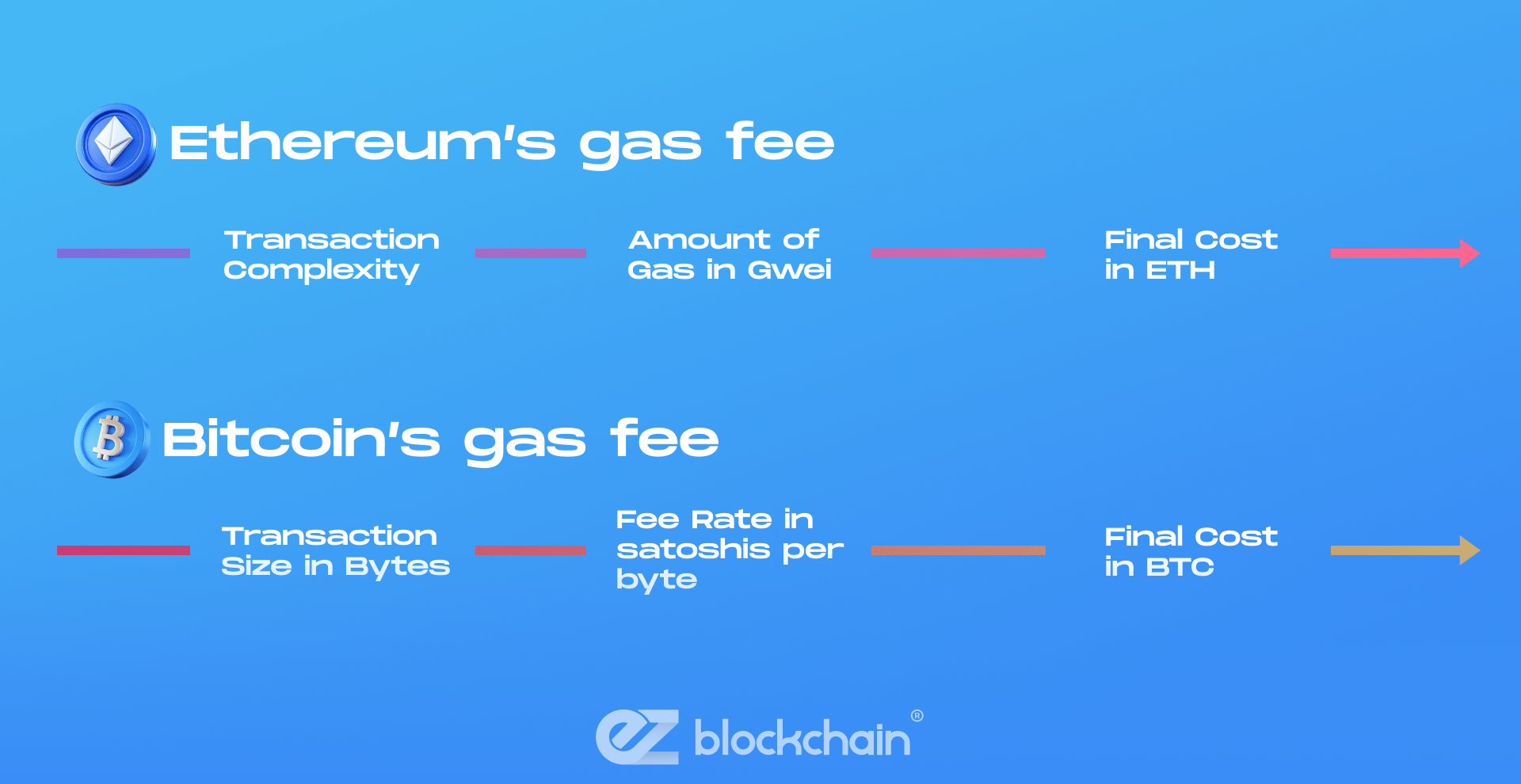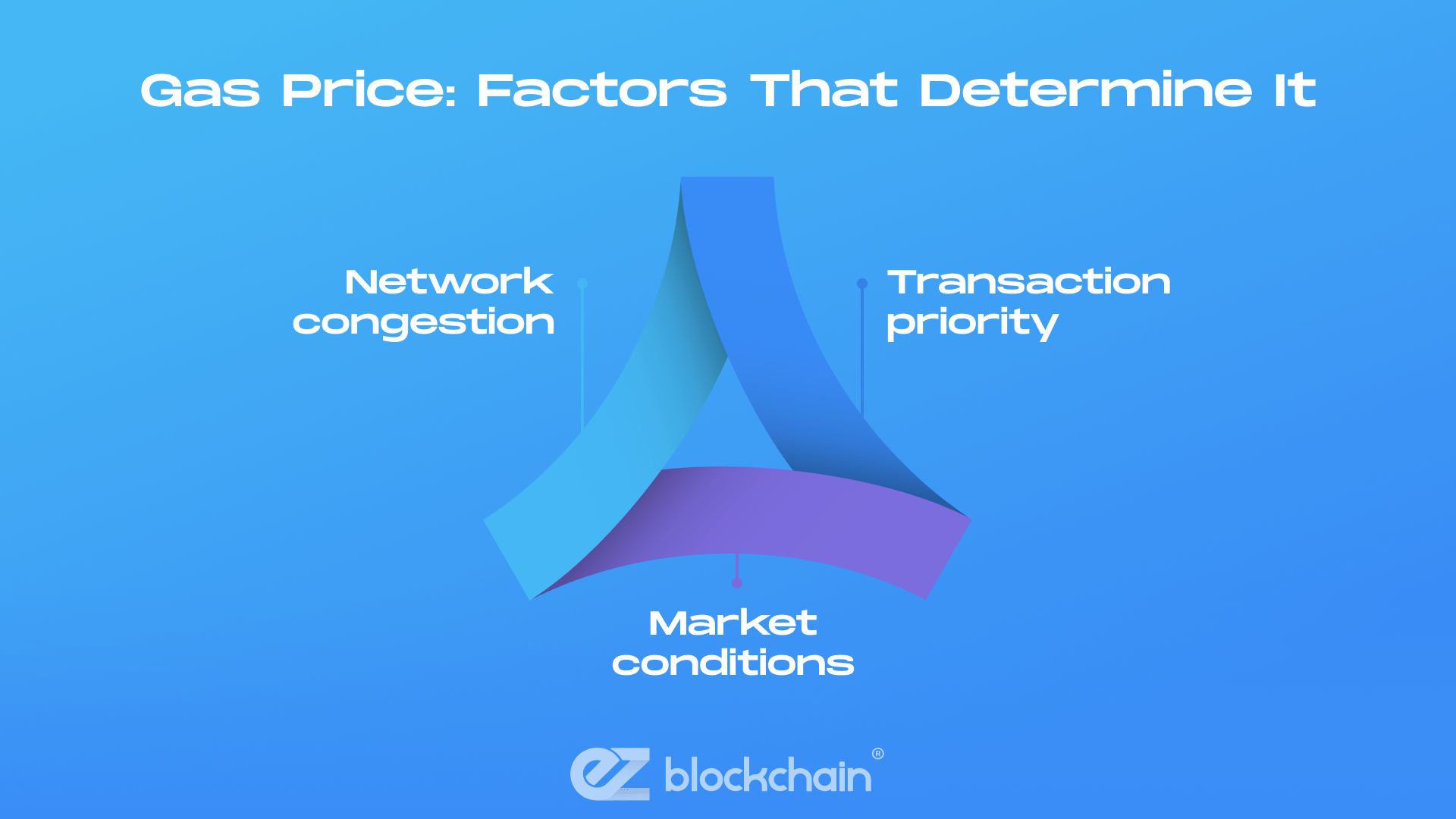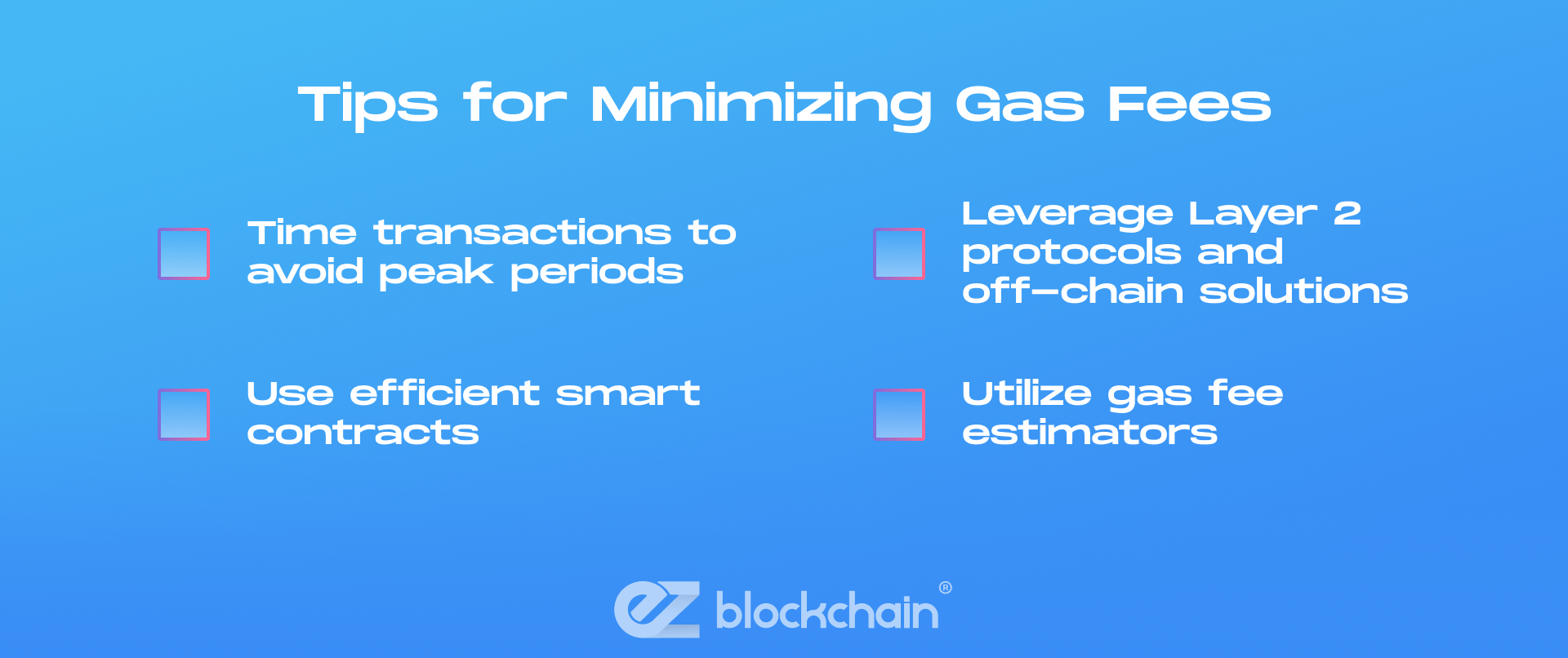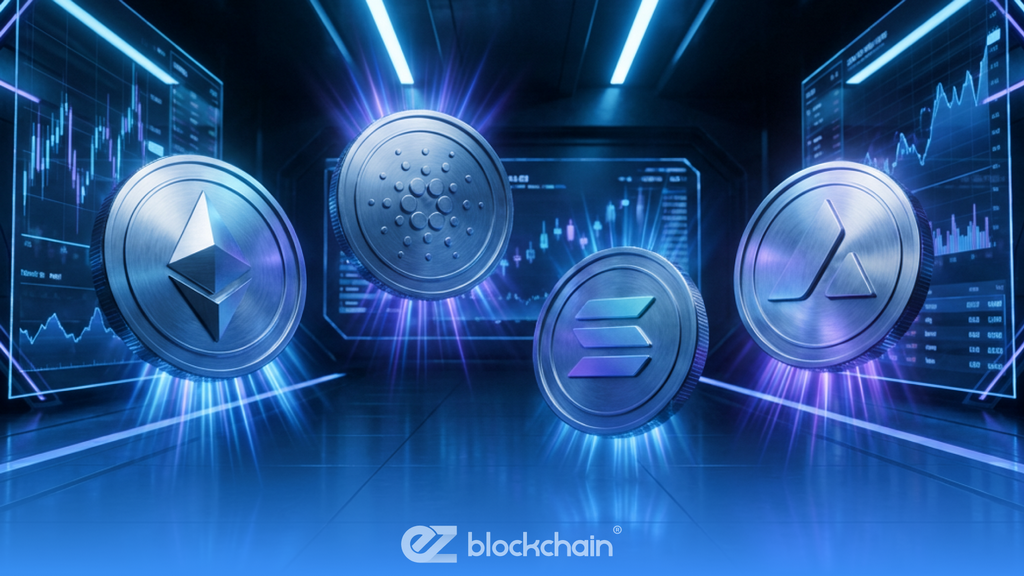Stay up to date with the latest news, announcements, and articles.
This is what we’re about to figure out, but let’s start from the beginning.
What is gas in cryptocurrency?*
Gas is the amount of computational resources required to execute transactions and operations on a blockchain network, particularly those that support smart contracts, like Ethereum. Gas is basically a pricing unit within Ethereum-based crypto networks, remunerated for validating transactions.
Higher-value transactions equal more gas. But while the gas itself is only a measure figure, gas fees are tangible compensations that miners get for their gas’ value (similar to block rewards — the compensation for processing transactions or solving complex problems).
What’s a gas fee all about and how does it work in practice? Let’s figure it out.
What Are Gas Fees in Cryptocurrency?
The volume of gas you generate for the crypto network equals the computational effort you are dedicating to mine coins in that network. Gas fees are like a cashback that you get in return for a well-focused stream of your hardware power poured into the cryptocurrency network.
But the overall price of your gas, based on which to calculate your gas fees, is not defined by its amount only, as differently prioritized transactions can be priced variously, giving you a choice to match your computational power output.
That price is usually denominated in a token that’s native to the network (like Ethereum’s Gwei). We’re talking about small fractions of the token, of course. The crypto gas fee is paid to the miner in the network’s native cryptocurrency, motivating them to continue mining.
There’s also a gas limit set for each block, which allows miners to fine-tune how much gas they wish to use per transaction processed. To know how much power is better to invest and what gas fee returns to expect, it’s important to understand how gas fees are calculated in the first place.
How Gas Fees Are Calculated
It’s as simple as this — the size of the gas fee awaiting a miner is shaped by the complexity of the transaction they set out to help process. The existing demand for the network also influences the prices. But let’s dig into some finer details.
Gas Units and Their Purpose
All in all, there are:
- A base fee — a mandatory fee set by the network and adjusted dynamically based on its demand;
- And a priority fee (or tip) — network users can add a tip to boost the priority of their transaction, thus incentivizing validators/miners for faster processing.
Ethereum’s Gwei, which is used to set gas fee pricing for transactions, is a fraction of an Ether, equalling 0.000000001 of one ETH. The Bitcoin network doesn’t actually have gas fees as is, but it uses a similar system with transaction fees, where miners are rewarded for their computation output, only with something called satoshis.
So the “Bitcoin’s gas fee” is satoshi per byte (sat/B), which also equals 0.00000001 of a BTC. The byte here defines the size of the transaction, the more complex it is, the more bytes it has. Bitcoin transaction fees are determined by multiplying the transaction size (in bytes) by the fee rate (in sat/B).

Gas Price: What Determines It?
The gas price reflects the cost per gas unit, typically denominated in the blockchain’s smallest currency unit, such as Gwei for Ethereum or satoshis for Bitcoin. The price is not fixed and fluctuates based on:
- Network congestion: High traffic tends to grow and stimulate competition among users, raising gas prices.
- Transaction priority: Users willing to pay higher gas prices are prioritized by miners or validators.
- Market conditions: The underlying token’s value influences the real-world cost of gas fees, especially during price surges.

Really, this dynamic pricing mechanism serves a higher purpose, helping make sure that transactions and operations are processed efficiently, with users deciding how much they’re willing to spend for faster execution.
The Formula for Calculating Gas Fees
Gas fees are typically calculated as:
Gas Fee = Gas Units × Gas Price

For Ethereum, this might look like:
- Gas units: 21,000 (standard for simple ETH transfers)
- Gas price: 50 gwei (user-defined based on market rates)

Calculation:
21,000 gas units × 50 gwei = 1,050,000 gwei = 0.00105 ETH
For Bitcoin, the calculation focuses on transaction size and fee rate:
- Transaction size: 250 bytes
- Fee rate: 10 sat/B
Calculation:
250 bytes × 10 sat/B = 2,500 satoshis

Factors Influencing Gas Fees
While the basic formulas for gas fees in crypto remain pretty much the same (or closely similar) for most blockchains, their pricing cap can differ a lot, mostly based on the blockchain’s current success and popularity.
Here are the main reasons impacting the size of fees to point out:
- Transaction complexity: More complex transactions, such as those involving multiple smart contracts, consume more gas.
- Network traffic: High activity levels during events like NFT drops or DeFi launches can spike fees.
- Block size limitations: Blockchains with smaller block sizes (like Bitcoin) handle fewer transactions per block, increasing competition.
- Token value: A rise in the underlying token’s market value amplifies the real-world cost of gas fees.
Gas Fees Across Different Blockchain Networks
To give you a wider picture of what are gas fees in crypto, here’s a breakdown of average gas fees (or their alternative compensations) on some of today’s standout blockchains, each running on its own protocol to boot.
- Bitcoin
-
- Protocol: PoW (Proof-of-Work)
- Average fee: 40-50 sats/byte
- Ethereum
- Protocol: PoS (Proof-of-Stake) 2.0
- Average fee: 50-150 Gwei
- Binance
- Protocol: PoSA (Proof-of-Stack-Authority)
- Average fee: 0.005 BNB
- Solana
- Protocol: PoS + Proof-of-History
- Average fee: 0.000005 SOL
- PolkaDot
- Protocol: PoS + NPoS
- Average fee: 0.0001 DOT
- Stratis
- Protocol: PoS
- Average fee: 0.001 STRAX
- Algorand
- Protocol: PPoS (Pure Proof-of-Stake)
- Average fee: 0.001 ALGO
- Polygon
- Protocol: PoS
- Average fee: 5-10 Gwei
- NEAR Protocol
- Protocol: PoS
- Average fee: 0.001 NEAR
- Avalanche
- Protocol: PoS
- Average fee: 0.001 AVAX
Tips for Minimizing Gas Fees
As opposed to a mining enthusiast who gets monetized benefits out of higher gas fees (if they can provide the matching power, that is), for a crypto coin holder and any other regular user of the blockchain network, these fees are necessary operational expenses that they must plan out, set up, and cover.
From the user’s perspective, the more they pay validators (i.e., miners) for working on their transactions, the faster results they’ll get, simply because the validators get a competitive incentive. This is why the users may want to try and lower gas fees where possible.
Here are a few pro tips for minimizing your gas fees:
- Time transactions to avoid peak periods
Gas fees often spike during peak hours or popular events. Scheduling transactions during off-peak times, like early mornings or weekends, can lower their final costs a lot. - Use efficient smart contracts
Optimizing the code in smart contracts can minimize gas consumption, saving costs over time. Developers can test contracts extensively to cut out redundant computations. - Leverage Layer 2 protocols and off-chain solutions
Layer 2 solutions like Polygon or Arbitrum handle transactions off the main blockchain, lowering fees dramatically. On top of that, you can batch multiple transactions into a single one to save even more expenses. - Utilize gas fee estimators
Tools like Etherscan’s Gas Tracker or BitInfoCharts provide real-time fee insights, allowing users to choose the optimal gas price. Take your time to explore the features of each and get reliable estimates fast.

The Impact of Gas Fees on Users and Developers
Gas prices in crypto can mean different things, and different blockchain use scenarios, for different types of users interacting with the blockchain. We’ve mainly explored the miner’s perspective, for whom gas fees are incentives and sought-after rewards. For users on the other side of the chain (owners and holders), gas fees are mandatory payments. Then, there’s also
To sum up, you already know what gas means for mining entrepreneurs. As for the others:

- For users: High gas fees can deter everyday transactions, making blockchain services less accessible. So small-scale users may find certain platforms unaffordable during congestion.
- For developers: Elevated fees impact the scalability of dApps, requiring innovative solutions to maintain affordability for users. Developers often consider networks with lower fees to deploy cost-effective applications.
Conclusion
Gas fees are more than meets the eye, serving as an essential mechanism to balance out a blockchain’s operational efficiency, security, resource allocation, and even chain-wide competition. And with the main challenge of handling gas fees being occasional spikes in their price, making them unaffordable for some during network congestion, we are looking at a more cost-efficient future thanks Layer 2 solutions and optimized smart contracts.
Hope this article clarifies the essentials related to gas and gas fees, and answers the question “What is a gas fee in crypto?” once and for all. Stay tuned for more!
Contact EZ Blockchain if you have related questions.
Consult with the specialists ready to dive into your needs and guide your next blockchain implementation.
Fill out a form and our bitcoin mining expert will contact you.
FREE CONSULTATIONchoose
a miner
profit and
understand data?
business remotely
with EZ Blockchain?
Fill out a form and our bitcoin mining expert will contact you.










